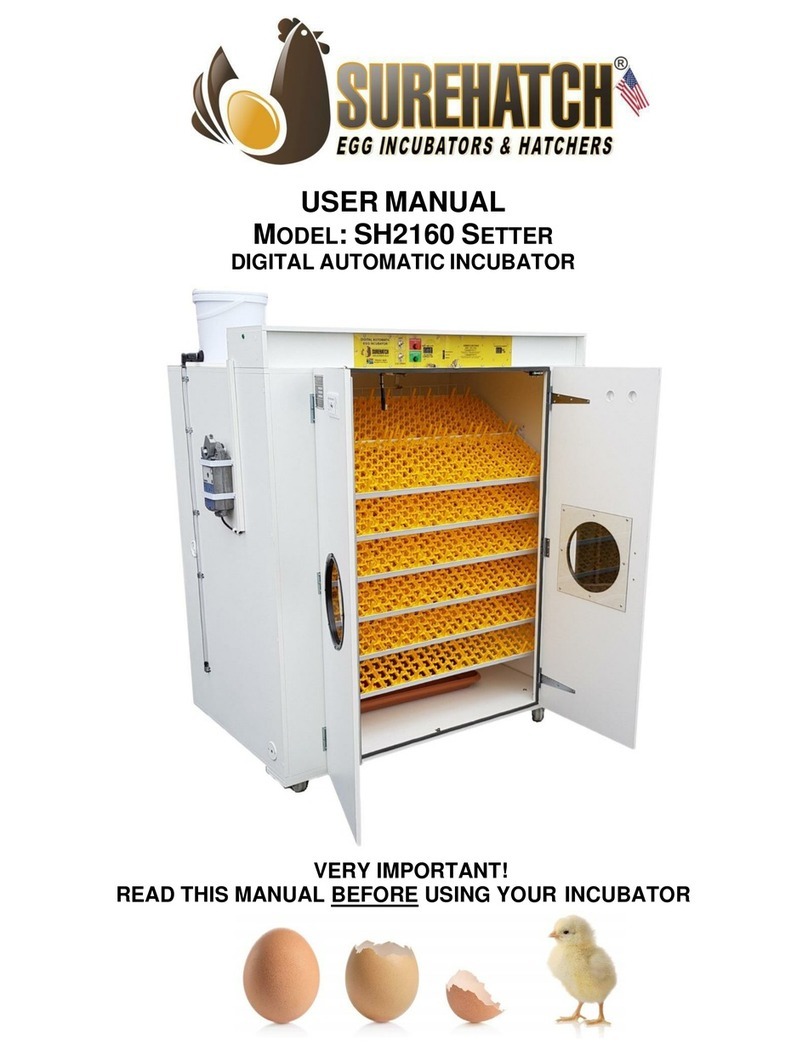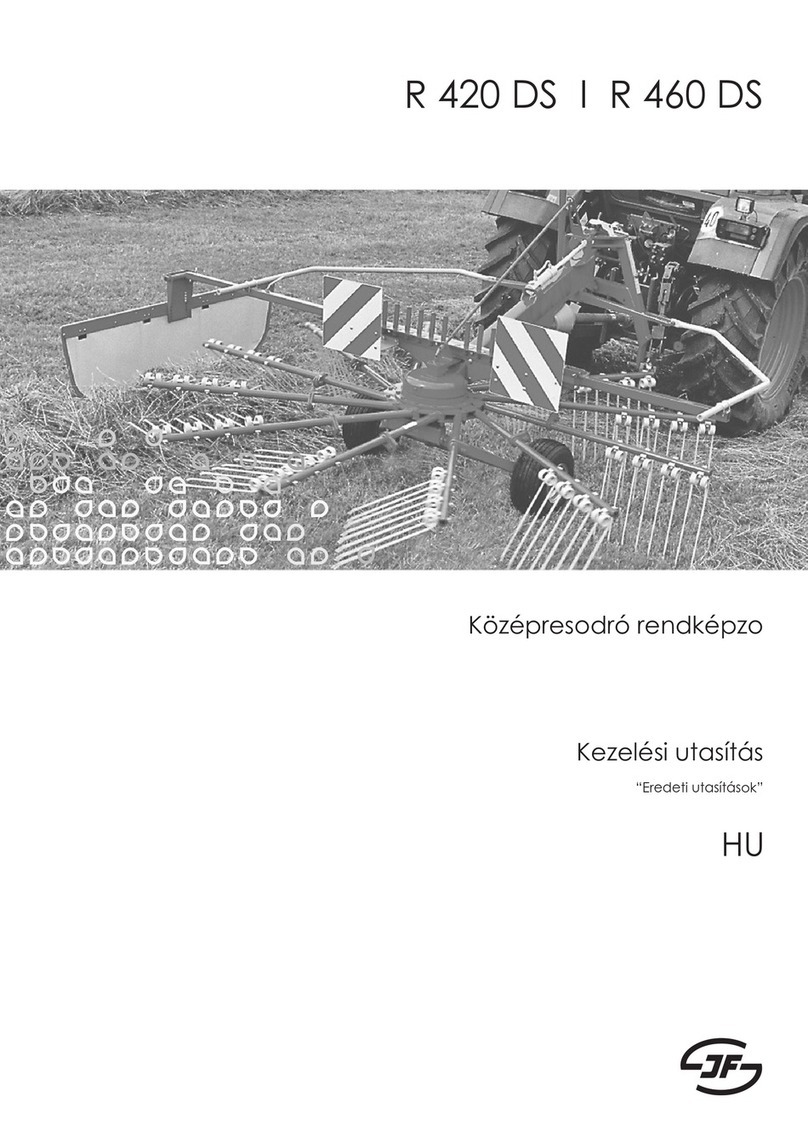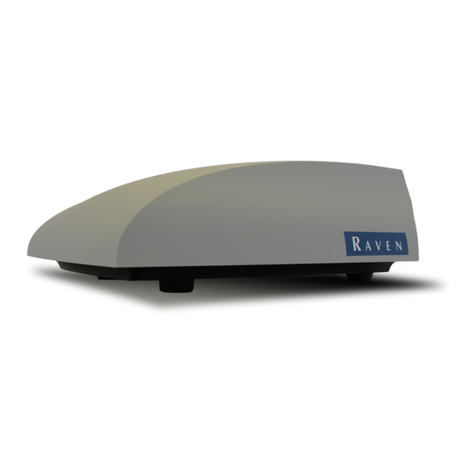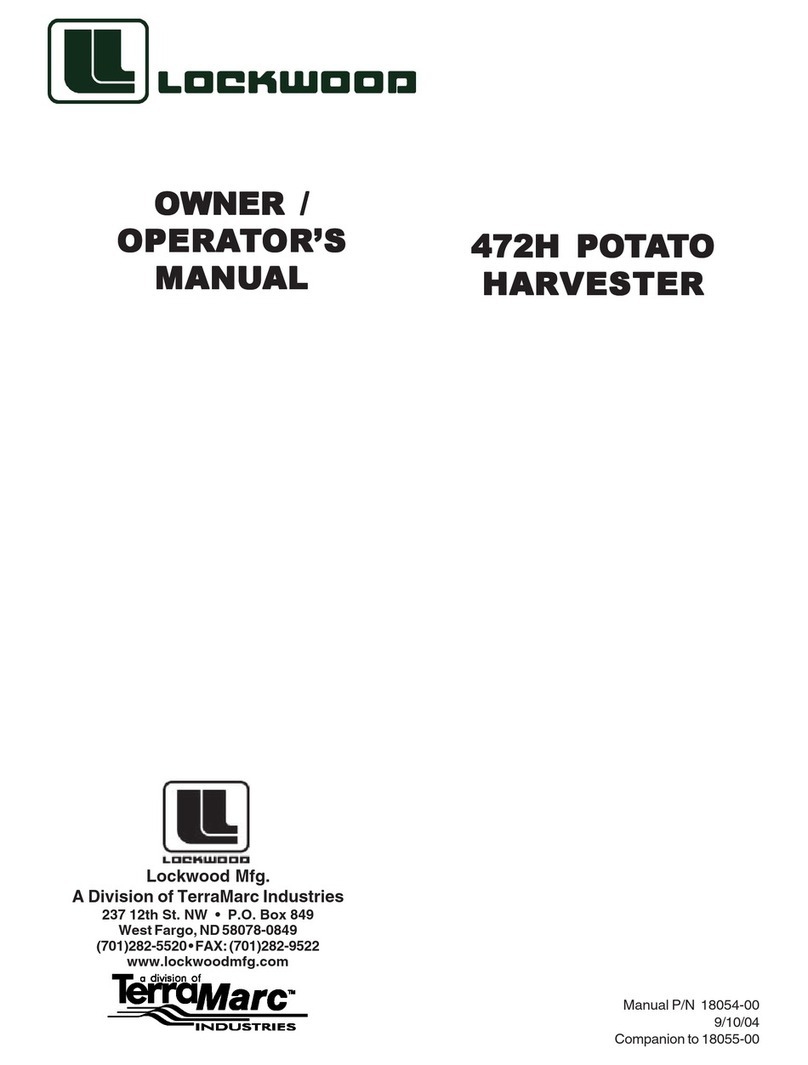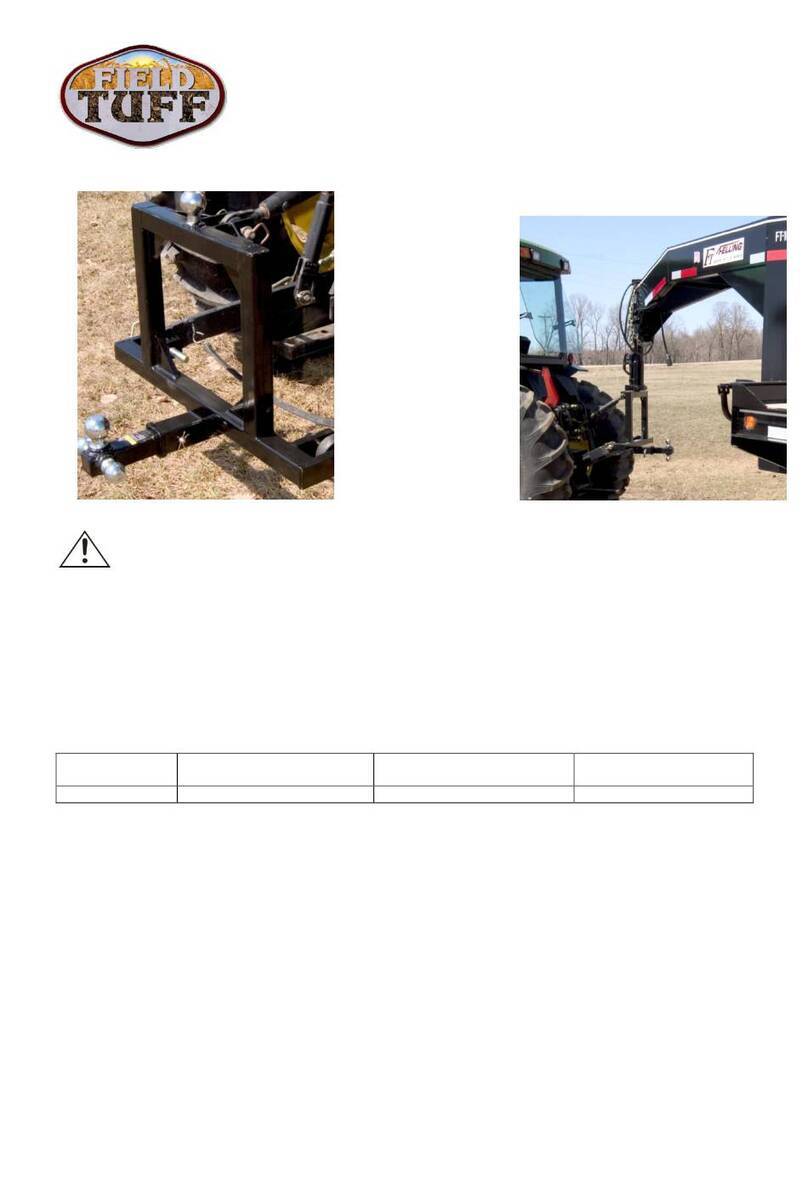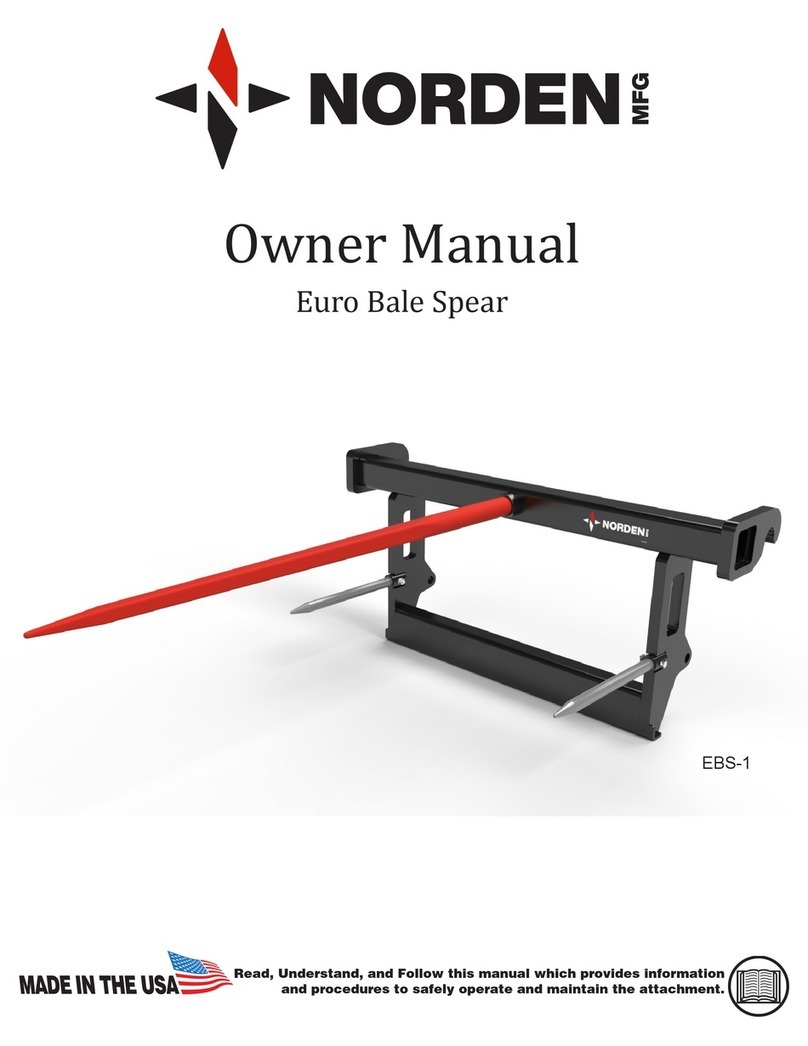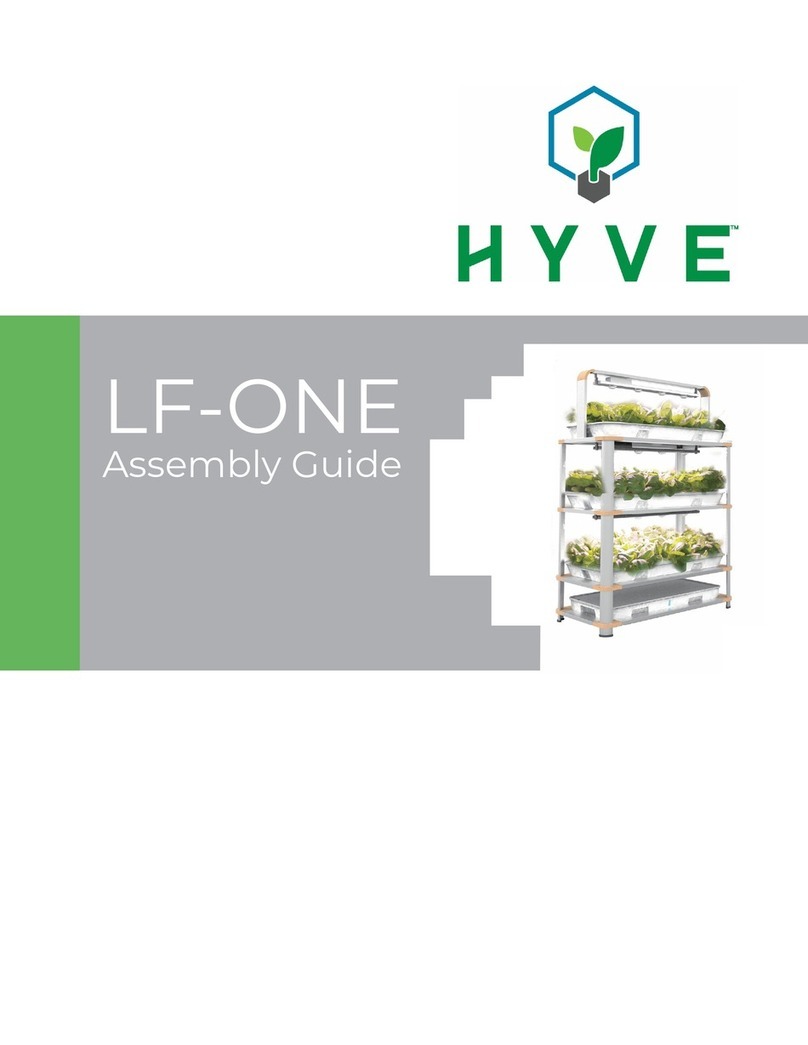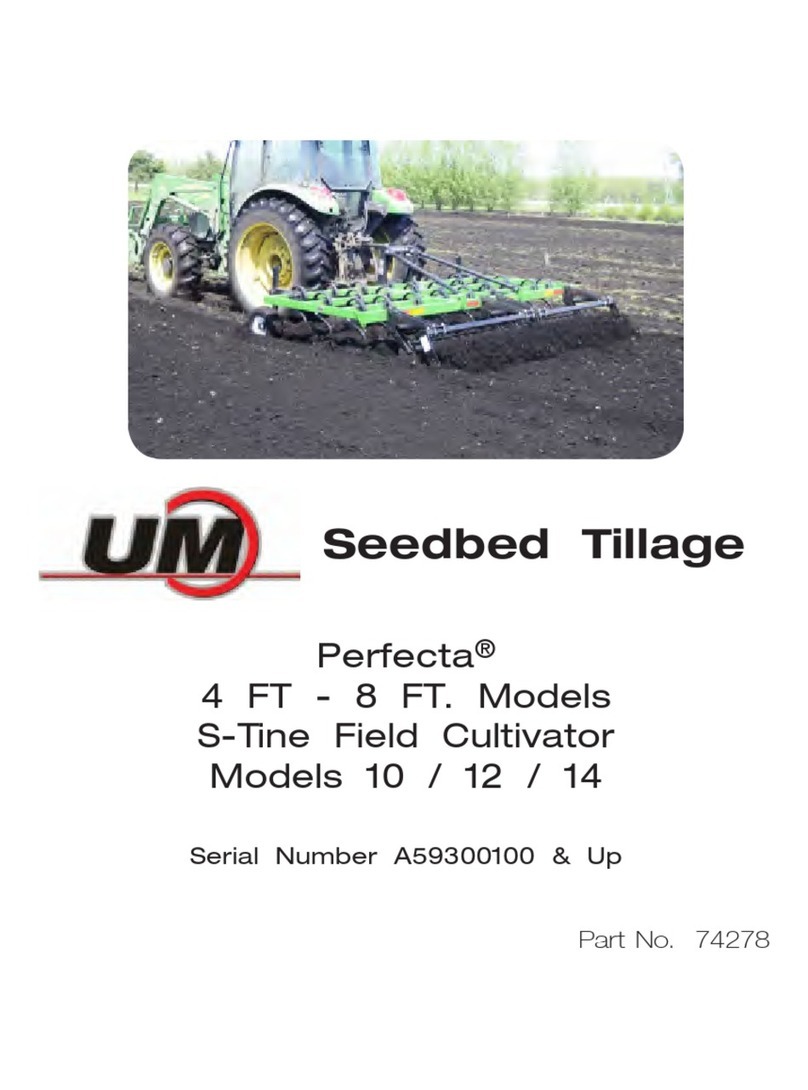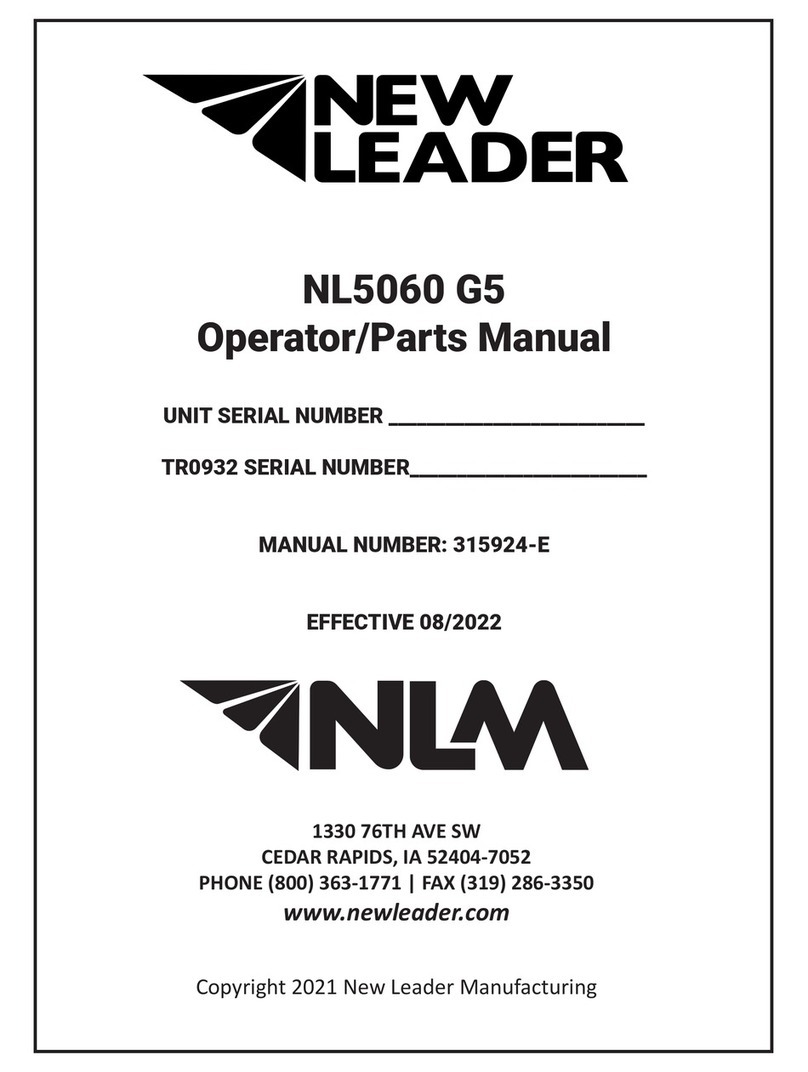SUREHATCH SH2000H User manual

USER MANUAL
MODEL:SH2000H HATCHER
DIGITAL EGG HATCHER
VERY IMPORTANT!
READ THIS USER MANUAL BEFORE USING YOUR
HATCHER

Table of Contents
Page 2 - 5:
Location and placement of your hatcher
What you will find inside your hatcher
How to use your Hatcher Control Panel
Page 6 - 9:
How to operate your hatcher
How to load eggs in your hatcher
Managing the hatching process
Page 9 - 15:
Daily Checklist for your hatcher
Incubation Problem Solving
________________________________________________________________________
Thank you for your choosing Surehatch!
Incubation and hatching is an exciting journey –thank you for trusting Surehatch as your hatcher
brand of choice in this endeavor. We wish you all the best and hope that you enjoy this journey as
much as we do!
Feel free to contact us for advice or assistance at the details below. Join the Surehatch Egg
Hatcher Owner’s Club on Facebook and meet some fellow Surehatch users!
Happy hatching!
Team Surehatch
Facebook: Surehatch Egg Hatcher Owner’s Club
Instagram: @surehatch
Website: www.surehatch.com
E-mail: sales@surehatch.com
Technical Specs: SH2000H Hatcher
Voltage: 120V AC, 60Hz Single Phase
For Indoor Use Only
Take caution when operating as moving parts can cause injury
Surehatch Hatchers have been designed for easy operation to produce the best possible
hatch rates taking all the variables of successful incubation into account.

All Surehatch hatchers and hatchers have been tested in our factory and are made to high
quality standards. Ultimately the success of your hatchery operation lies in the hands of the
hatchery manager/user and the quality of the hatching eggs. It is therefore critically important that
the hatchery manager ensures that he/she follows the best recommended practices for successful
incubation.
The information provided in this user manual aims to help ensure optimal functioning of the hatcher to
achieve the best possible incubation results. In addition to the contents of this user manual we also
recommend that you further your knowledge of incubation by studying additional hatchery
management info available on the internet.
NOTE: It is recommended that you operate the hatcher with a small quantity of inexpensive
eggs to be assured of your operating procedures and the performance of the hatcher before
attempting to hatch large quantities of eggs or expensive eggs.
Success in incubation has 3 main pillars which determines hatching results –these are:
1)
The hatcher (That is our part)
2)
The quality of the hatching eggs (That is up to the hen and cock)
3)
The inputs/management of the entire process (That is you)
All 3 pillars need to work together to produce a successful hatch. Below shows the interaction of all
the variables which determine incubation success:

Hatching Egg quality and Pre-Incubation Egg Storage
It is important to note that the hatcher can only give good hatch rates if the eggs which are placed in it is of
good quality. Infertile eggs will never hatch, poor quality eggs will give low hatch rates. Good quality hatching
eggs havethe best chances of successful hatching. Shipped eggs have lower hatchability due to the
vibration/disturbances to the embryo and non-ideal temperature conditions during transport.

Only use good quality, clean fertile hatching eggs
-
Do not store eggs for longer than 7 days before incubating. On average, one day’s
storage adds one hour to incubation time. This must be taken into account when eggs are set, so
freshand stored eggs should be set at different times
-
The longer you store the eggs, the lower the hatch rate. Hatchability is depressed
by prolonged storage. The effect increases with storage time after the initial six-day period,
resulting in losses of 0.5 to 1.5% per day with the percent increasing as storage extends
further
-
Use eggs from good medium aged flock –young birds produce small eggs which are not ideal
for incubation. Older flock produce eggs which have lower hatchability
-
Only set eggs which are uniform and clean. Never set “dirty” eggs – eggs with visible
manureon, as you will introduce pathogens into the hatcher
-
Don’t wipe eggs before setting as you will close the egg pores which they need to breathe
through –rather use a brush to clean eggs
-
If you smell a bad egg, remove immediately and discard
-
Candle eggs after 10 days in the hatcher to check for fertility. Eggs cannot be checked
for fertility before 10 days in the hatcher
-
Remove eggs which are not fertile as they can potentially become “poppers” – eggs that
burstand release pathogens
-
Don’t use a permanent marker when marking eggs. The egg can absorb the toxic
chemicals inthe permanent marker which leads to potential early death. Rather write on the plastic
tray
-
Never mix waterfowl (like duck eggs) with dry or game fowl (like chickens) in the same
hatcher or hatcher. Waterfowl have potential pathogens on their shells which may negativelyaffect
chicken eggs and cause early deaths of embryos
-
Place eggs with their sharp end pointing downwards both in storage as well as when
placing inthe hatcher

Location/Placement of the hatcher
•Hatcher/hatcher must be placed INDOORS.
•Select a suitable room which has an average temperature of 68°F - 82°F
•Don’t let the room temperature exceed 86° F. The hatcher/hatcher cools down via the air
which it pulls in from the room. If the room temperature goes over 86°F the hatcher will struggle to
cool down and can potentially overheat the eggs
•Have a reliable source of electricity - (110V Household Electricity –Single Phase).
If you use a generator as a back-up make sure it’s an INVERTER GENERATOR. Any other type
of generator could damage the electronics.
•Ensure that the floor surface is level where you place the hatcher. The door of your
hatcher/hatcher will not shut properly if the floor is uneven.
•Place the hatcher/hatcher away from direct sunlight. You may place the hatcher on a table
or on the ground, whichever suits you best. Place the hatcher 2 feet away from a corneror wall so
that air can move around it freely.
•The room must have good ventilation. It’s important that there is always fresh air that
comes into the room.
•Depending on your room layout, we recommended that you make use of a wall/window
extractor fan to pull the air out of the room. As eggs develop into chicks, they release C02 (Carbon
Dioxide) which needs to be extracted out of the room. Ensure that fresh air (Oxygen)enters the
room. Ideally the air in the room needs to be replaced by fresh air every 4 to 6 hours.
•Try to maintain on average a 50% to 60% humidity in the ROOM. It is normal for humidity
to fluctuate day by day –this is fine as long as you don’t have extremes (Like 20% or 90% humidity
in the room). Your hatcher has been designed to be capable to regulate its humidityunder most
conditions –however, the more stable the room humidity, the easier it is for your hatcher to regulate.
•If you are in a very dry climate, place some water pans in the room to increase humidity. If you
maintain an average room temperature as suggested earlier then your room humidity usually results
in about 50%
•If you are in a very humid climate, you can remove the water pan/containers out of the
hatcher/hatcher to decrease humidity in the hatcher/hatcher
•Maintaining hygiene is particularly important in your hatcher/hatchers as well as in
the hatchery room. Do not keep chicks in same room as the hatcher/hatcher. Use a
separate room to placehatched chicks. This is done to maintain hygiene.
•We recommend having strict access control to the hatchery room. Do not let any unauthorized
persons tamper with the hatchers/hatchers while you are away.

Some basics about incubation you need to know
•Chicken eggs take 21 days to incubate
•For the first 18 days eggs are placed in plastic egg trays (Also called the setter)
•On the morning of day 18 the eggs must be moved from the plastic egg trays(setter) to
the hatcher (Hatching crates below the egg tray).
•The eggs must lay still in the hatcher. On day 21/22 the chicks will start hatching.Chicks can
be left inside the hatcher for up to 24 hours after they have hatched.
•DO NOT TO OPEN THE HATCHER/HATCHER FROM DAY 18 to 21 –opening the door causes
major moisture loss and may “shrink-wrap” the chicks inside the eggs
•Ideal incubation temperature is 99.5°F (Fluctuations between 96°F to 101°F is normal). Your
hatcher is pre-set to regulate the temperature to 99.5°F
•Ideal hatcher humidity: Day 1 to 18: 50-60%. Day 18 to 21: 60-65%
•Eggs must lose 12% of weight due to moisture loss in the first 18 days.
•Only eggs which are fertile can stand a chance to hatch. There are various reasons why
eggs don’t hatch –at the end of this manual you will find reasons why eggs fail to hatch. You
can check if the eggs are fertile after 10 days in the hatcher. You can’t check for fertility
before they are placed in the hatcher.

CONTENTS INSIDE YOUR HATCHER:
Plastic Hatching
crates:
Eggs are placed in the
hatcher on day 18.
Eggs will hatch on day
21/22.
DON’T OPEN THE
HATCHER FROM
DAY 18 to 21.
Remove chicks only
after most have
hatched after day 21
Plastic Water Pan:
(Located below hatching crates)
Water evaporating from the pan creates
humidity required for incubation.
The water pan will automatically fill itself
with water coming from the bucket on top
of the machine.
Hatcher Control Panel:
Shows hatcher Temperature
and Humidity %
Water Bucket:
Must be filled with clean
water. Bucket supplies
water to water pan inside.
Refill when empty
Temperature and humidity
Sensor:
Sensitive to water.
Don’t spray water directly
onto sensor when cleaning
machine!
Humidity Control
Air Vent
Connection
pipe for
water
bucket
Auto ON/OFF Switch:
Hatcher will switch off when
you open the door and back
on as you close it
Humidity
Control
Air Vent

STARTING UP YOUR HATCHER:
STEP 1: Plug in your hatcher:
Switch ON your hatcher by plugging it in to the wall plug.
STEP 2: Connect water bucket to hatcher and fill bucket with water
Your hatcher has an automatic float valve inside that will allow water to flow into the inside
water pan from the bucket on top of the machine. Make sure that you check the bucket
daily and fill with CLEAN WATER as required.
STEP 3: SETTING HATCHER TEMPERATURE: (This will take about 1 hour)
The hatcher has been factory set to heat up to 99.5°F (37.5 Degrees Celsius) when you switch it
on. The hatcher will take about 1 hour to heat up to 99.5°F
***You can change the temperature display from Fahrenheit to Celsius by pressingboth
TEMP UP and TEMP DOWN together at the same time and keeping it pressed for 6 seconds.
Next steps:
- Close hatcher door
- Wait for hatcher to reach 99.5°F
- To change the hatcher temperature set-point simply press the “Temp Up” or “Temp Down” Button
(Generally not required –only for advanced users

HATCHER Control Panel:
STEP 4: SETTING HATCHER HUMIDITY
(This will take 1 to 2 hours)
You can start adjusting humidity once the hatcher has been running at a temperature of 99.5°F for an at
least 1 hour.
The main way in which to change humidity on your hatcher is to adjust the Humidity Control Air Vents
on the front of the hatcher. (Slide these plastic vents up or down to open or close the vents).
*****The more open the vent is, the less the humidity will be. The less open, the higher the
humidity will be.
Never close the humidity control air vents completely –it’s always good to keep them slightly
open to assist in sufficient air exchanges for the eggs.
Set humidity by following the “Humidity Settings” instructions on the hatcher
Ideal humidity percentage is between 50% and 65%
Hatcher
Temperature
Ideal = 99.5°F
Hatcher
Humidity
(Ideal 50%
to 65%)
Hatcher
Light Switch
Humidity Control
Air Vents

HUMIDITY SETTINGS (IDEAL = 50% to 65%)
Humidity % is determined by the surface area of the water container/ pan and the amount of fresh air exchange in the hatcher.
You can regulate humidity % by decreasing or increasing the SURFACE AREA of the water and by regulating the fresh air that
comes into the hatcher
The ideal humidity % for incubation is between 50% and 65%
TO INCREASE HUMIDITY %
1)
Fill water container/pan with WARM WATER
2)
Adjust the HUMIDITY CONTROL AIR VENT in the front of the hatcher to a LESS OPEN/ MORE CLOSED position
If the above two steps fail to increase humidity, do the following in addition to the above:
3)
Place water pans and humidifier in the room where the hatcher is standing to increase room humidity
TO DECREASE HUMIDITY %
1)
Adjust the AIR VENT in front to a MORE OPEN / LESS CLOSED position
2)
Remove one of the water containers
If the above two steps fail to decrease humidity, do the following:
3)
Remove both water containers completely (Only in very humid / wet areas)
4)
Place a dehumidifier in the room (Only in very humid / wet areas)
After you are satisfied with the temperature and humidity you may place the eggs in the hatcher
Hatcher light:
Your hatcher has a light located on the inside of the hatcher. This light may be switched on in
order to view the eggs or chicks inside the hatcher.
VERY IMPORTANT: Don’t leave the light on as this will negatively effect the functioning of the
hatcher. Only use the light when necessary. Switch the light OFF after you have viewed the
eggs/chicks inside the hatcher.

CONGRATULATIONS!
YOU HAVE NOW SUCCESSFULLY SET UP YOUR SUREHATCH EGG HATCHER.
NEXT YOU NEED TO FOLLOW THE DAILY CHECKLIST
Remember to clean the hatcher after each hatch. Sanitation is CRITICALLY importantfor
successful hatching. Before loading any eggs, clean the hatcher by wiping the insides with a
cloth and hatcher sanitizer. It is essential that the hatcher and trays/crates be cleaned
thoroughly between hatches.
Before cleaning inside the hatcher, be sure to disconnect its electrical cord from theoutlet
to avoid possible electrical shock. Take care not to introduce moisture or waterinto the
electrical system of the hatcher and allow all surfaces to dry before again reconnecting the
electrical cord to the outlet.
BE CAREFUL not to spray water directly onto the temperature or humidity sensor
located inside the machine as this will damage the sensor.

DAILY CHECKLIST FOR YOUR SUREHATCH HATCHER:
Check the following once per day —Correct where necessary
-
CHECK Electricity - Electricity must always be ON. Power interruptions will negatively
affect the eggs.
-
CHECK Hatcher Temperature
Ideal temperature is 99.5°F (Fluctuation between 96°F to 101°F is normal)
-
CHECK Hatcher Humidity
Ideal humidity % for incubation is between 50% and 65%. Humidity takes hours to build
up and is quickly lost when the hatcher door is opened. It is normal for humidity to fluctuate 10% to
15% from day to day due to changes in outside humidity.
-
CHECK Hatcher Fan - Must always be ON and spinning
-
Check for smelly, rotten eggs —remove and throw away if any
-
Check that FRESH AIR is coming into the room
-
CHECK that nothing is blocking hatcher AIR VENT
-
CHECK that there’s NO DIRECT SUNLIGHT on the hatcher
-
CHECK ROOM TEMPERATURE —Ideal room temperature = 68°F - 82°F
-
Don’t let the room temperature exceed 86° F.
-
CLOSE hatcher DOOR after you have opened it.
-
Make sure no one can tamper with hatcher while you are away!
-
ONLY incubate CLEAN, FRESH, FERTILE eggs
MAINTAINING BIOSECURITY AND HYGIENE
-
WIPE CLEAN the insides of your hatcher after every hatch
-
WASH YOUR HANDS EVERY TIME BEFORE you work with the hatcher or touch the
eggs
-
WASH your hatching crate/s and egg trays after every hatch with disinfectant
-
Keep your incubation room clean and sanitized!
-
Throw away any eggs which are smelly, dirty or rotten
Trouble Shooting Failures with Egg Incubation

When incubation of eggs fails, indications are often available that a well trained
professionaluses for diagnosing the causes for failure. The information listed below
includes the more common symptoms for incubation failures, the causes for each symptom,
and the recommended corrective measures Symptoms of incubation/breeder management
problemsinclude:
•Clear eggs with no visible embryonic development.
•Blood rings in incubated eggs.
•Many dead embryos at an early stage.
•Chicks fully formed, but dead without pipping.
•Pipped eggs, but died without hatching.
•Early hatching.
•Late hatching or not hatching uniformly.
•Sticky embryos.
•Embryos sticking or adhering to shell.
•Crippled and malformed chicks.
•Abnormal, weak, or small chicks.
•Chicks with labored breathing.
•Large, soft-bodied mushy chicks.
•Rough or unhealed navels on chicks.
•Short down on chicks.
•Excessive yellow down color.
Symptoms
Probable Cause
Corrective Measures
Clear Eggs with no
embryonic
development
(infertiles)
Males undernourished
Follow a recommended feeding program to
provide adequate nutrition. Replace
underweight males with vigorous ones
Too few males
Increase the number of males in the flock.
Seasonal decline in fertility
Use young cockerels more resistant to
environmental stress.
Competition among breeding
males
Do not use too many males. Rear all males
together. Place temporary partitions within
large pens.
Diseased flock
Conduct an approved disease control
program.
Frozen combs and wattles
Provide comfortable housing. Properly select
and maintain drinking fountains.
Old males
Replace with younger males.
Selected mating in pens
Artificially inseminate infertile hens. Replace
males in the pen/house.
Male sterility
Replace males in the pen/house.
Crowded breeders
Provide recommended floor space, at least 3
ft²/bird.
Improper artificial
insemination techniques or
use of old/over-diluted
semen.
Follow recommendations of primary breeder
company.

Eggs damaged by
environment
Gather eggs frequently (at least once daily).
Eggs stored too long or
incorrectly
Store eggs at 50-60 degrees F. and 60%
relative humidity. Incubate eggs within 7
days of lay.
Symptoms
Probable Cause
Corrective Measures
Blood rings
Improper storage
Follow recommended egg storage and
gathering recommendations.
Improper incubation
temperatures
Check thermometer accuracy and hatcher
functions. Follow recommended temperature
settings.
Improper breeder nutrition
Feed breeders a diet with balanced nutrient
levels.
Improper fumigation
Follow fumigation recommendations.
Symptoms
Probable Cause
Corrective Measures
Many dead
embryos at early
stages
Improper incubation
temperatures (usually too
high)
Follow recommended incubation temperatures.
Improper egg turning
Turn at least 3 times daily.
Inherited low hatchability
Avoid cross breeding. May need to secure
different breeding stock.
Improper ventilation
Increase ventilation rate in hatcher and/or
room, but avoid drafts. Add oxygen at high
altitudes.
Pullorum disease or other
salmonelloses
Use eggs from disease-free sources. Have NPIP
representatives blood-test the breeder flock.
Improper nutrition of breeders
Provide a well-balanced nutritional diet to breeders
Symptoms
Probable Cause
Corrective Measures
Chicks fully formed,
but dead without
pipping
Low average humidity
Maintain recommended humidity for species ofbird
incubated.
Improper incubation
temperature
Check thermometer accuracy and hatcher
functions. Follow recommended temperature
settings.
Improper ventilation in
hatcher
Adjust ventilation to provide optimum moisture-
loss rate from egg during incubation.
Improper turning of eggs
Turn eggs at least three times daily until 3 days
prior to hatching.
Chilling of eggs
Gather eggs frequently and store under proper
conditions.
Diseased or poorly
conditioned breeder flock
Conduct a good disease control and breeder
management program. Use a well-balanced
nutritional diet.

Symptoms
Probable Cause
Corrective Measures
Pipped eggs, but
died without
hatching
Insufficient moisture
Increase humidity during the hatching period.
Improper ventilation
Increase ventilation rate in hatcher and/orroom,
but avoid drafts.
Improper setting of eggs
causing malpositioned
embryos
Set eggs with small end down. Turn eggs
properly but avoid turning within 3 days of
hatching.
Symptoms
Probable Cause
Corrective Measures
Early hatching (may
have bloody navels)
High incubation
temperatures
Follow recommended incubation temperatures.
Check equipment for proper function. Guard
against electrical surges or high hatcher room
temperatures.
Improper egg storage
Store eggs at 60 Degrees F. and 60% R.H. Turnat
least 3 times daily.
Symptoms
Probable Cause
Corrective Measures
Late hatching or not
hatching uniformly
Low incubation
temperatures
Follow recommended incubation temperatures.
Old or improperly stored
eggs
Gather eggs frequently, cool immediately and
store eggs properly. Do not store longer than 7
days.
Symptoms
Probable Cause
Corrective Measures
Sticky embryos
(embryos may be
smeared with egg
contents)
High average incubation
humidity
Follow recommended incubation humidity. Check
size of air cell as an indicator for adjusting humidity
condition.
Low incubation
temperature
Follow recommended temperature settings.
Lethal genes
Avoid cross breeding. May need to secure different
breeding stock.
Inadequate ventilation
Increase ventilation rate in hatcher and/or room,
but avoid drafts.
Improper fumigation ofeggs
Fumigate eggs by following the procedure
carefully.
Symptoms
Probable Cause
Corrective Measures
Embryos sticking or
adhering to shell
Low incubation humidity
(especially during
hatching)
Increase incubation humidity by increasing water
evaporation. Embryos dried too much.
Excessive ventilation rate
Reduce ventilation rate but maintain minimum air
exchange to prevent suffocation of embryos.

Symptoms
Probable Cause
Corrective Measures
Abnormal, weak, or
small chicks
High incubation or hatching
temperatures
Follow recommended incubation temperatures.
Small eggs hatch small
chicks
Set only standard or large sized eggs.
Insufficient incubation
humidity
Maintain recommended humidity for species of
bird incubated..
Improper ventilation in
hatcher unit
Increase ventilation rate, but avoid drafts.
Diseased or poorly
conditioned breeder flock
Use eggs from disease-free sources only. Have
NPIP representatives blood-test the breeder
flock.
Improper nutrition of breeders
Provide a well-balanced nutritional diet to
breeders (especially vitamin levels).
Excessive fumigation in
Fumigate using proper procedures.
Symptoms
Probable Cause
Corrective Measures
Crippled and
malformed chicks
Improper incubation
temperatures (usually too high)
Follow recommended incubation temperatures.
Low incubation humidity
Increase incubation humidity by increasing water
evaporation. Embryos dried too much.
Improper egg setting position or
turning during incubation
Set eggs with small ends down. Turn eggs atleast
3 times daily. Do not turn eggs within 3
days of hatching.
Heredity
Proper culling and breeding practices will reduce
problems.
Slick hatching trays
Use trays with wire floors or place crinoline on
hatching surface.
Improper nutrition of breeders
Provide a well-balanced nutritional diet to
breeders.
Symptoms
Probable Cause
Corrective Measures
Chicks with labored
breathing
Excessive use of fumigant
Follow recommended fumigation procedures.
Respiratory diseases
Check disease status of breeder flock. Conduct a
thorough cleanup and disinfection of hatcher and
hatching facilities.
Symptoms
Probable Cause
Corrective Measures
Rough or unhealed
navels
Improper incubation
temperatures
Follow recommended incubation temperatures.
High hatching humidity
Maintain proper humidity.
Navel infection (Omphalitis)
Clean and disinfect hatcher and hatching units
between settings of eggs. Maintain dry hatching
trays. Properly store and fumigate eggs.
Symptoms
Probable Cause
Corrective Measures
Short down on
chicks
High incubation
temperatures
Follow recommended incubation temperatures.
Low incubation humidity
Follow suggestions to correct insufficient
humidity.
Excessive ventilation
Reduce vent openings to restrict but maintain
adequate air exchange.

Holding chicks in hatcher toolong
after hatching
Remove all chicks as soon as fluffy but within 24
hours after hatching.
Symptoms
Probable Cause
Corrective Measures
Excessive yellow
coloring of down
Improper and excessive
fumigation in hatcher unit
Follow recommended fumigation procedures.

Trouble Shooting Failures with Surehatch Egg Hatchers
In general there is very little that will go wrong with your Surehatch hatcher. In the unlikely event that
something goes wrong, please contact us or consult the trouble shooting below. NB Always switch
off the hatcher when making repairs. ONLY ELECTRICIANS SHOULD MAKE REPAIRS dueto the
dangers of electrical shock.
Symptoms
Probable Cause
Corrective Measures
Hatcher not running
Hatcher not plugged in or electricity
not on. Auto off switch atdoor faulty
Make sure that all plugs are
correctly plugged in and that the
electricity is on. Check auto off
switch on door
Fan is working but Hatcher not
producing heat
Faulty Temperature Controller or
faulty heating elements
Replace Temperature Controller.
Once this is done and the problem
persists, consider replacing the
heating elements (Very unlikely to
happen)
Hatcher does not regulate
temperature
Faulty Temperature Controller or
temperature sensor
Replace temperature controller or
temperature sensor
Egg trays not turning
Egg Turner not switched on or eggs
loaded incorrectly
Make sure egg turner is switched on.
Load eggs in balance (Load equal
number of eggs in front and back of
the machine). If all eggs areloaded in
front or back then the turner will not
turn
Incorrect temperature
Someone adjusted temperature or
faulty temperature controller
Adjust temperature and monitor. If
not resolved consider replacing
temperature controller and
temperature probe
Humidity too high (Shows 99%
Reading)
Faulty Humidity Sensor due to water
spilled onto it
Dry out sensor with hair dryer (Blow
on sensor for 3 min on cold setting of
hair dryer). If reading does not go
back to normal replace humidity
sensor

20
Thank you for your support!
We wish you all the best and look forward
todoing business again.
Happy hatching!
The Surehatch Team
Facebook:
Surehatch Egg Hatcher Owner’s Club
Website: www.surehatch.com
E-mail: sales@surehatch.com
LIMITED WARRANTEE & LIMITED LIABILITY
Whereas Surehatch has no control over usage of equipment supplied, it assumes no responsibility for
losses or damage from their equipment. No guarantee on hatchability of eggs.
Do not expose electrical parts to water. Installation of replacement electrical parts should be done by
qualified electrician.
STANDARD TERMS AND CONDITIONS APPLY
Contact us via email to receive your copy.
Other SUREHATCH Farm Equipment manuals
